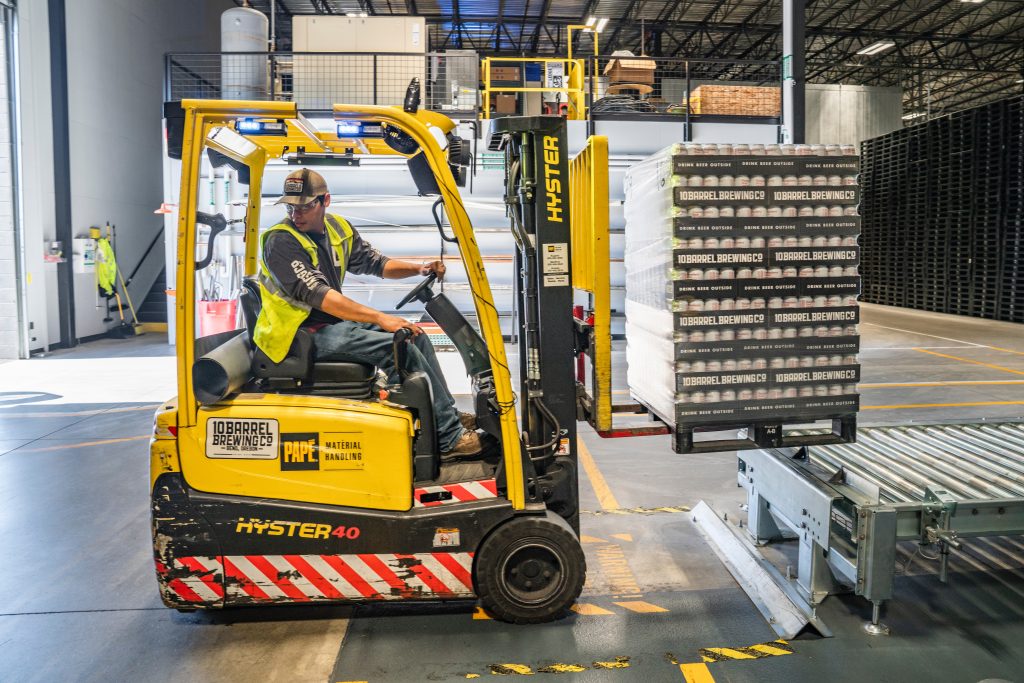
Is your organization striving to make smarter safety decisions?
Are you aiming to create a culture of continual improvement?
Is achieving operational excellence in safety a top priority?
If you answered “Yes!” to one or all of those questions, you’ll understand the importance of having a comprehensive incident reporting system in place.
An incident reporting system can help any organization record, track, trend and investigate all types of incidents, dangers, and near-misses.
In this comprehensive guide, we’ll explain exactly what an incident reporting system is and precisely how it can benefit your organization.
We’ll be discussing things like:
- What are Incident Reporting Systems?
- What is Incident Reporting and how does it work?
- The importance of document control
- Response
- Incident investigating
- Root cause analysis
- Paper-based vs Software – what’s the difference?
- Safety incident reporting software: What to consider
- Final thoughts
What are Incident Reporting Systems?
An incident reporting system is any system that helps an organization record, track, and investigate any type of dangerous situation. It could be a hazardous condition, an incident, or even a near-miss.
The system itself can take a number of forms.
- It could be entirely paper-based, with file folders and sticky notes kept in filing cabinets.
- It could be entirely online, with cloud-based software helping to store and manage incident reports and admin documents.
- Some organizations use a hybrid approach where some elements (such as incident report forms) are stored as hard copies and other elements (such as reports and actions) are stored online as spreadsheets (such as Google sheets).
What is Incident Reporting and how does it work?
While the exact process for filing an incident report will vary between organizations, the basic safety incident life cycle should look broadly similar, whether a company is working predominantly offline or online.
The safety incident life cycle has six stages as follows:
- Incident Reporting
- Response
- Investigation
- Corrective Action
- Tracking
- Summary Report
Incident reporting is the first step in a much longer process. Reporting is usually thought of as what happens after an accident, dangerous condition, injury or near-miss has taken place. However, there are actually two types of metrics that should be studied.
These are:
- Lagging indicators, and
- Leading indicators
Let’s look at these two metrics in greater detail.
What are lagging indicators?
Lagging indicators are incidents that are reported after an event has taken place.
These include:
- Near-misses – events where no actual harm occurred.
- Accidents resulting in personal injury
- Equipment or property damage
- No harm events – situations that all staff across the organization need to be made aware of.
- Adverse events – those related to medicines, medical devices, and vaccines, rather than employee pre-existing conditions.
- ‘Sentinel’ events – unexpected events such as trips, falls, vehicle accidents, the outbreaks of diseases, and natural disasters.
- Environmental incidents such as spills or releases that must be contained and reported to the Australian government.
- Vehicle incidents – including vehicle incident data that can be used to launch vehicle incident corrective/preventative actions (CAPAs).
These are all examples of lagging indicators – you’re looking in the rear-view mirror, reporting what happened and seeing what you can learn from it.
What are leading indicators?
Leading indicators are metrics that can be used to pre-emptively reduce the risk of injury or incidents.
For example:
- Safety walkthroughs – you can study the length and frequency of walkthroughs.
- Training effectiveness and the frequency that training takes place.
- Management safety meetings and the frequency with which they occur.
Leading indicators are more like looking out of the windshield and seeing what problems could arise. Some organizations view near-misses as leading indicators, although they are events that happened and just didn’t lead to actual harm or injury. Kind of like a free pass!
Incident reporting works by having employees or key members of an organization report incident, accidents, injuries, and near-misses.
How?
By using an incident reporting form!
Reporting forms can be either:
- Paper-based and stored as a hard copy in a file, or
- Digital and stored electronically or in the cloud
Incident reporting forms ensure that incident and injury data is accessible for reporting and helps configure investigations and workflows. It should provide enough detail for the other stages in the six-stage incident life cycle to be completed.
Following an incident report, an organization can:
- Make a response
- Plan and assign corrective and/or preventatives actions tasks
- Track completion
- Comply with injury reporting regulations.
The importance of document control
The second part of an incident reporting system is document control. Once the incident reports have been created and submitted, what next?
For the incident reporting system to be effective, all documents should be stored in a secured centralized repository.
At the simplest end, many small Australian businesses work from a paper document known as a Safety Statement. With relatively few incidents reports to deal with, many small firms use file folders or office cabinets to store incident reports. This gives them control over user access and helps ensure that information about past incidents is kept secure.
But paper-based reporting systems can cause administrative issues for medium-sized businesses. The model WHS Act requires that Australian businesses notify their regulator of certain types of workplace incidents known as ‘notifiable incidents’ as soon as they occur. With a paper-based approach, the onus is on employees to complete this work and any lapse could result in significant fines.
Furthermore, to comply with guidance from Safe Work Australia, organizations must track all versions and revisions of reporting documents to ensure that only accurate, up-dated documents are used.
For this reason, many firms turn to incident reporting software that stores all documents online. This lets staff across the entire organization see any updates and changes in real-time, helping to ensure that the latest versions of documents are used.
Moving away from paper-based storage and towards online or a cloud-based incident reporting system helps you create a complete audit trail. This gives you a complete history of when records were created and when they were archived, retrieved, transmitted, or modified. By logging the local time and date, incident reporting software helps organizations of all sizes maintain regulatory compliance.
Response
After an incident report is submitted, the organization will make an appropriate response. For small businesses, the correct protocol will be outlined in the safety statement that staff can consult for guidance.
For larger organizations, or those using incident reporting software, the software itself will be able to suggest appropriate actions in response to the incident.
Most incident report forms will include space for details about the response taken. A key member of staff, such as the supervisor, will be assigned to record this and sign off on the incident.
5. Incident investigation
For serious incidents, the organization may need to conduct a thorough investigation of the incident.
Key members of staff such as safety professionals will analyse the incident using data and evidence provided in the incident report.
They will work on defining the underlying cause with the aim of reducing risk and the chances of future incidents occurring.
The goal of an incident investigation is to implement preventative measures and reduce the risks faced by employees.
Root cause analysis
The most comprehensive way to reducing risk, avoiding future incidents and driving continuous improvement in any organization is to use root cause analysis.
In small organizations, this work will typically be completed by OHS staff. Larger organizations or those using incident reporting software may have software to help them with root cause analysis activities.
The main root causes methodologies used are:
- Basic checklists
- Fishbone (Ishikawa) diagrams,
- 5 Whys,
- Gap analysis
- And more!
These methodologies, either separately or combined, help manage or eliminate contributing and root causes, and identify and implement corrective actions. These actions can counter the identified root causes.
Paper-based vs Software – what’s the difference?
In general, smaller businesses will use paper-based incident reporting systems, while medium and larger businesses will opt for a software-based approach. However, organization of all sizes, from start-ups, to educational institutions and even non-profits, can actually benefit from a software solution to incident reporting.
So, what are the main differences?
Real-time updates
Moving away from a paper-based incident reporting system means saying goodbye to file folders and filing cabinets stuffed full of documents and reports. Unlike paper forms that must be manually retrieved and modified whenever an action is taken, software incident reporting systems offer real-time updates.
Listen.
When you move to a software system, the key details related to each health and safety incident are shared in real-time online with all relevant members of the organization. This helps each staff member learn from each other’s experiences and improve workplace safety.
Identify new areas for improvement
Earlier in this guide, we discussed lagging and leading indicators. Most organizations are good at responding to lagging indicators such as dangerous conditions, accidents, and near-misses.
But leading indicators are tougher to track and follow.
One of the key benefits of adopting a software-based approach to incident reporting is that it gives you a higher level of visibility into your organization’s safety performance.
With software, you are able to unidentified new areas for improvement than may have otherwise gone untracked, such as:
- meeting frequency
- training frequency and quality
- safety walk-through frequency
Incident reporting software can help detect issues that are likely to cause future incidents, such as a lack of safety training and low scores on post-training tests by employees. By detecting these root causes, the software can suggest preventative action such as increasing training frequency and/or improving the quality of the training.
Another example would be non-conformance applications, or NCRs. Many firms who switch to incident reporting software find that their NCRs double or even triple. This means that more NCRs are being recorded and fewer are going unnoticed, helping the organization focus on their improvement efforts.
Automated follow-ups
With paper-based incident reporting, it’s easy for a supervisor to say that further consideration will be given to a future incident – and then nothing gets done!
Incident reporting software makes the process of following up on incident reporting far easier and faster. Organizations can actively monitor whether staff members are following through on critical steps in the reporting, investigating and action process. What’s more, much of this work can be automated so that employees are sent automatic email reminders to attend meetings and training.
Safety incident reporting software: What to consider
Safety incident reporting software makes incident reporting and investigation incredibly simple!
Incident reporting software lets your organization record, track and investigate any type of incident, including near-misses and dangerous conditions.
This helps you reduce risk and keep your employees safe.
So, what do you need to look out for?
Here’s our guide to everything you need to consider when choosing the right incident reporting software for your organization.
Offline and mobile capability
Offline connectivity is a huge plus; your employees can capture date when they are working remotely or without an internet connection. They can then sync with the system and upload the data when they regain connectivity. Mobile capability means that your staff will experience a purpose-designed mobile experience no matter which mobile device they use.
Meetings and communications management
The best incident reporting software can help you manage all your meetings and communications, helping you keep on top of your workload.
You can sit back and let the software do everything from:
- Scheduling meetings
- Send automated notifications to attendees
- Record and track meeting attendance
- Assign and track follow-up tasks
By maintaining a record of all meetings and associated tasks, incident reporting software can help ensure that incidents are properly responded to in a timely manner.
The software can also record and track of communications. This helps your employees share information, plan activities and communicate in a more efficient way.
Data import and API access
The latest incident reporting software features both data import tools and API access. Data import means that you can map data from Excel spreadsheets directly into the software – perfect for adding historical data or updating data with records.
API access means that the software can communicate seamlessly with other third-party systems. This makes pushing and pulling data one database to the other a breeze.
Business analytics and intelligence
If your organization is looking to make smarter decisions and great a culture of continual improvement, business analytics and intelligence is one of the more important areas to consider when choosing incident reporting software.
Leading incident management software gives you 360-degree visibility of your organization and lets you get the most out of your data.
How?
The software can automatically generate reports, data slicers, and dashboards, giving your employees the information they need to respond to incidents in the best way.
Conclusion
In this comprehensive guide, we’ve explained exactly what an incident reporting system is and the benefits it can offer to your organization.
Whether your organization uses a paper-based system or has already moved to a software solution, the key features of a solid incident reporting system never change. If you want to move towards a safety culture, you need to have a data-driven approach to investigating, analysing and responding to incidents.
Related posts:
- 6 Key Elements to Include in a Good Incident Report
- Top 5 Incident Reporting Tools That Will Make Your Job Easier



